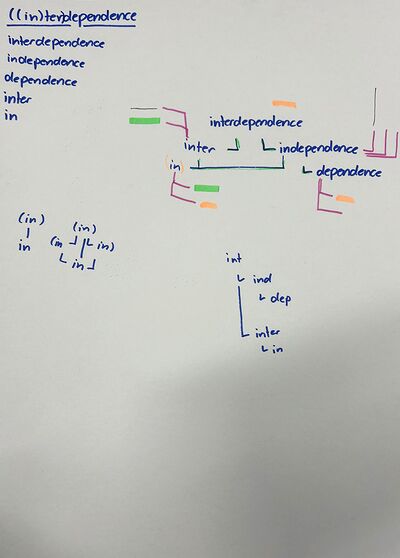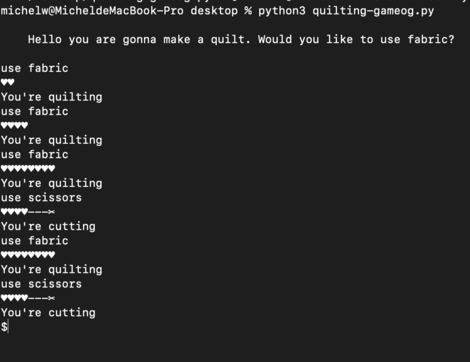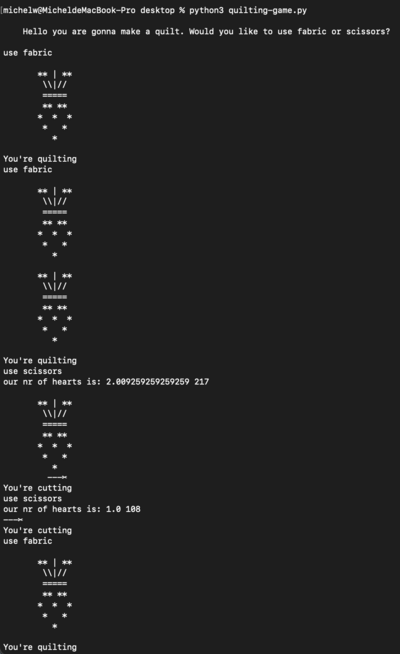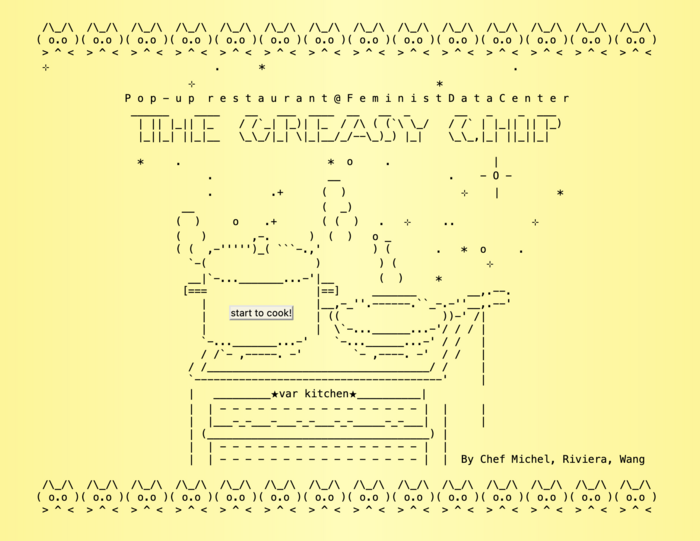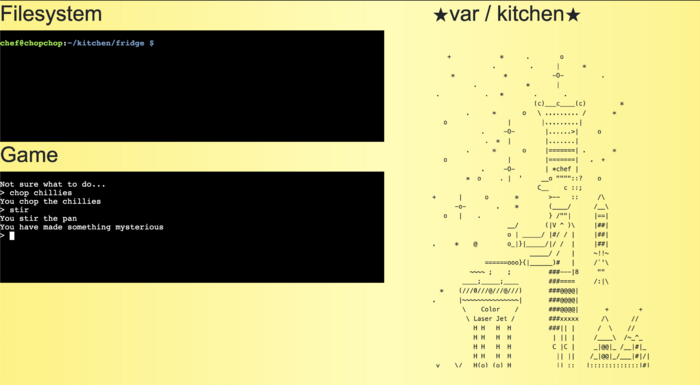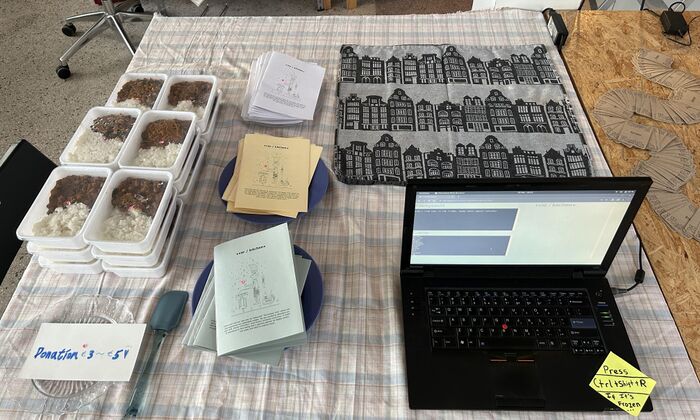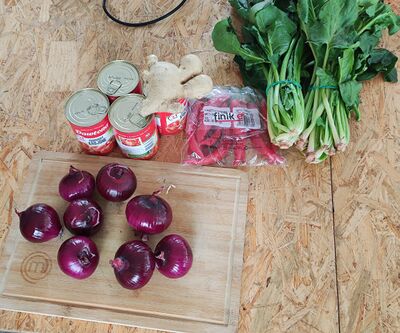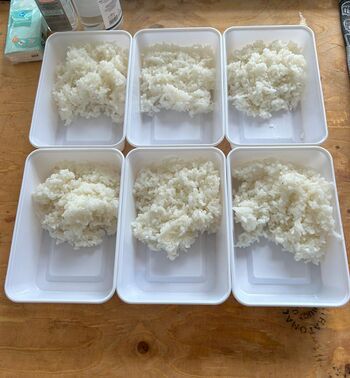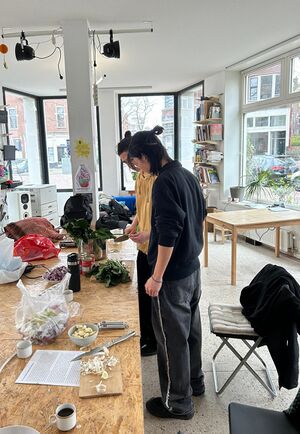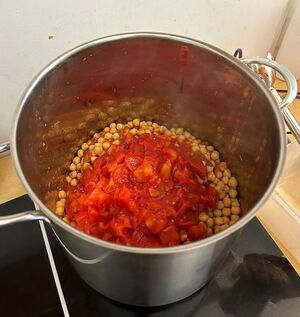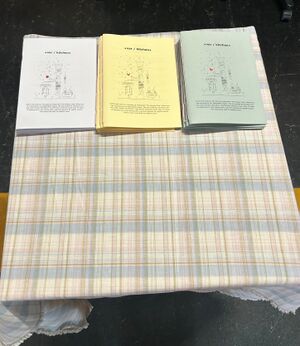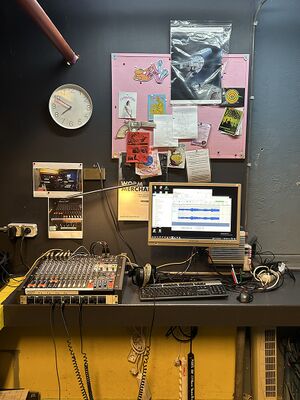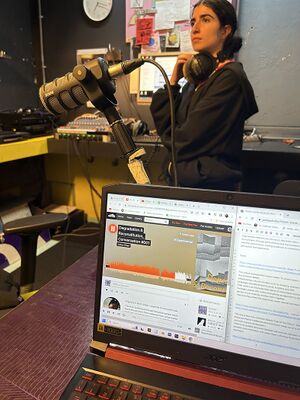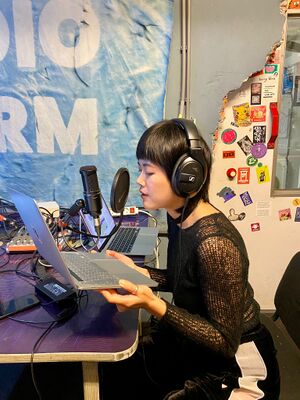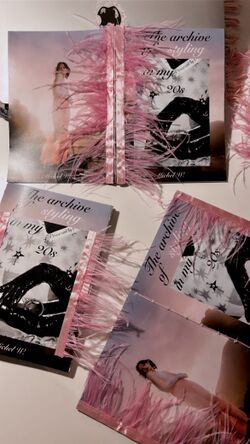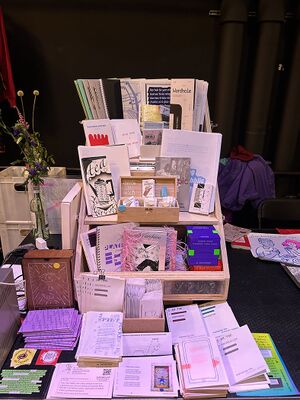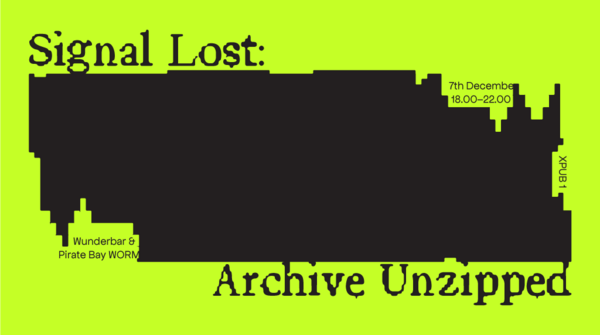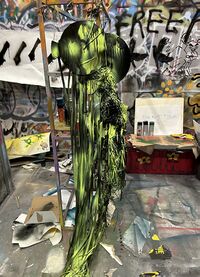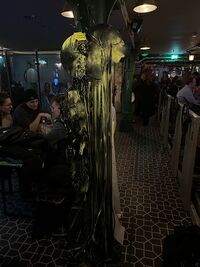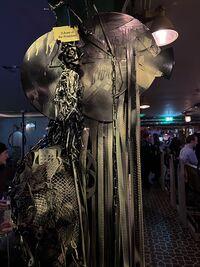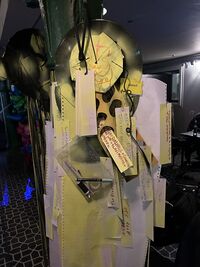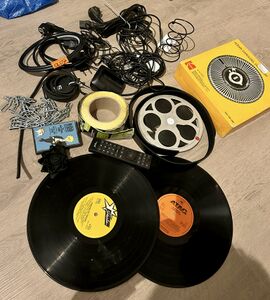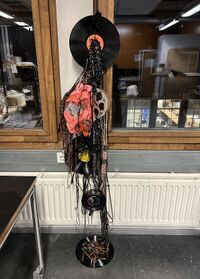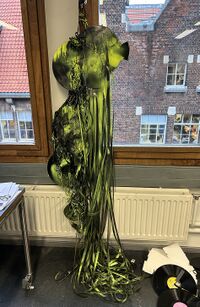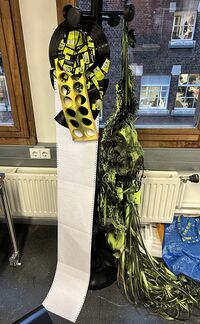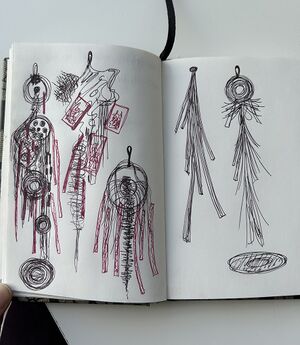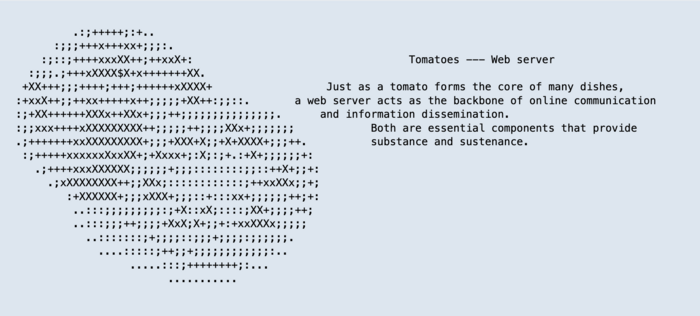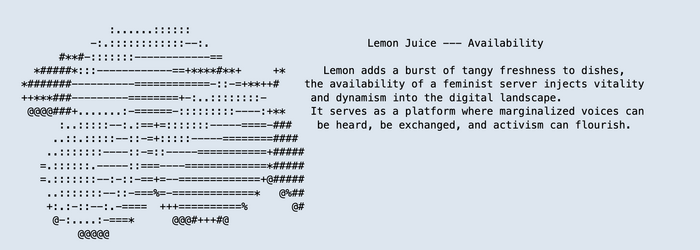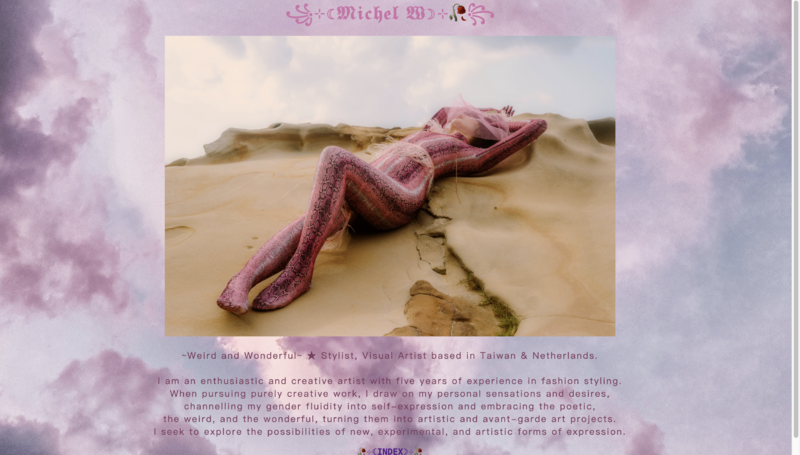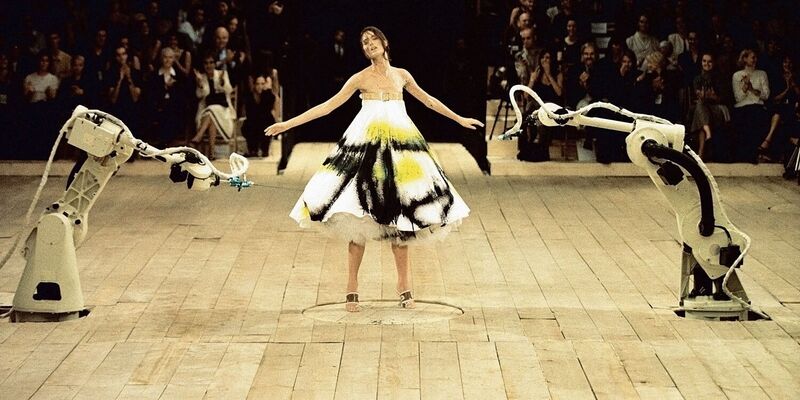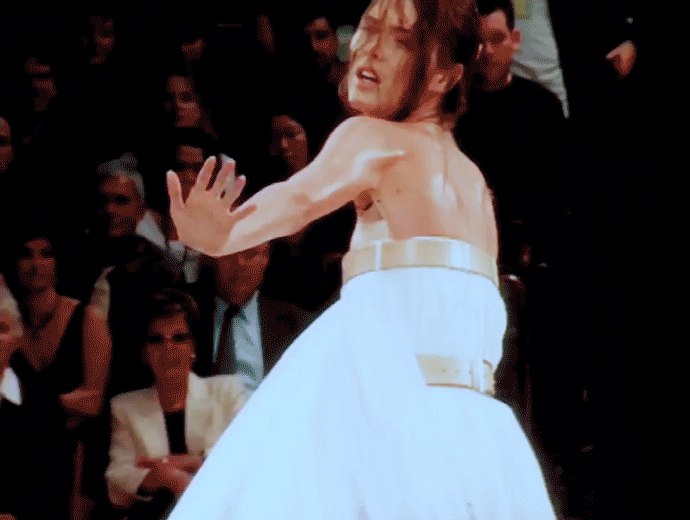User:Michel W/SPECIAL ISSUE🥀23: Difference between revisions
| Line 263: | Line 263: | ||
=== Methods🕸️ === | === Methods🕸️ === | ||
=[[User:Michel_W/Trimester_II_Assessment|⊹☾Trimester II Assessment☽⊹]]= | =[[User:Michel_W/Trimester_II_Assessment|⊹☾Trimester II Assessment☽⊹]]= | ||
{{:User:Michel_W/Trimester_II_Assessment}} | {{:User:Michel_W/Trimester_II_Assessment}} | ||
Revision as of 20:29, 2 April 2024

I.January
Special Issue🕸️
A feature of technology would like to added is that it could makes a therapeutic magic to oneself⭑~
- What is a server?
A computer that runs a program to provide services, or rather a role that a computer takes by running this program. Other computers can connect to the servers, either in a local network or remotely. Servers can be dedicated to one service (database, website, email, ftp) or can provide all these services in one server.
(HTTP: Hypertext Transfer Protocol is an application protocol that defines a language for clients and servers to speak to each other.)
Feminist Server Summit:
⊹Summary: https://areyoubeingserved.constantvzw.org/Summit.xhtml
⊹PDF: https://areyoubeingserved.constantvzw.org/AreYouBeingServed.pdf
- What is cloud computing?
'Cloud computing is an increasingly commonplace term today, used to describe the relocation of hardware resources, programs, and data from individual, local machines to a network accessible from a variety of platforms and devices. [...] the removal of the need for the user to be near to the larger material forms of storage and processing'
⭑A FEMINIST SERVER MANIFESTO 0.01⭑
A feminist server…
- Is a situated technology. She has a sense of context and considers herself to be part of an ecology of practices
- Is run for and by a community that cares enough for her in order to make her exist
- Builds on the materiality of software, hardware and the bodies gathered around it
- Opens herself to expose processes, tools, sources, habits, patterns
- Does not strive for seamlessness. Talk of transparency too often signals that something is being made invisible
- Avoids efficiency, ease-of-use, scalability and immediacy because they can be traps
- Knows that networking is actually an awkward, promiscuous and parasitic practice
- Is autonomous in the sense that she decides for her own dependencies
- Radically questions the conditions for serving and service; experiments with changing client-server relations where she can
- Treats network technology as part of a social reality
- Wants networks to be mutable and read-write accessible
- Does not confuse safety with security
- Takes the risk of exposing her insecurity
- Tries hard not to apologize when she is sometimes not available
Prototyping🕸️
How to serve over the internet?
- HUB
- Using Jupyter
- Configuring SSH with a Proxy jump
If your jupyter is stuck, you can restart it with this command:
sudo service jupyterlab@USERNAME restart
You can also check its status with:
sudo service jupyterlab@USERNAME status
$ git status
To remove all the changes you made after your last pull/push
$ git stash
$ git commit -m "i fixed the ascii art"
Methods🕸️
🕷️Wordquilt🕷️
⊹Editorial 2 Team: Senka, Alessia, Thijs, and me :3
Pad: https://pad.xpub.nl/p/editorial-team-2
⊹Keyword wordquilt No.1: ((in)ter)dependence
Pad 01/31: https://pad.xpub.nl/p/si23-310124
II.February
Special Issue🕸️
Why quilt?
- to move from the abstract to the concrete - stitches, patches, seams, quilt
- gives an opportunity to visualise the work done collectively
- gives an opportunity to practice decision making protocols
- can be a method of publishing and storytelling
- a form of kinesthetic learning
- gives everyone something to be engaged in while making collective decisions
Highlight the historical connection beween weaving/textile work and computation - the jaquard loom, hand-woven software https://www.righto.com/2019/07/software-woven-into-wire-core-rope-and.html
⊹An introduction to quilting and patchwork
⊹Re:traced Threads: Generating Feminist Textile Art with Tracery
꧁꧂
I'm interested in the concepts of "quilting". For example, weaving, sewing, networking, combination of different projects/topics...etc. I like the ideas about creating a parallel between the patterns of quilting and codes/networks, also it's a good point to explore the seams, in both digital and physical ways.
About my ideas of the game is that last Tuesday me and Senka made a quilting game, using Ascii art (or emojis) to create a digital quilt. We can also add quotes/information we found inspiring or want to share with public, so it became a quilt of both visual and textual info. Personally I'm fascinated with how to combine digital and physical methods to a project. It would be nice if we could print these digital quilt into paper/fabric etc in the end.
(Not sure if possible but) I'm also thinking of the sounds quilting. Last Special Issue we have many recording/sounds archives, could it be a part of our "quilting"? Maybe we could bring several forms of quilting together into our final launch at Varia? :0 (Sounds like another way to active an archive)protocols for a quilting archive
Quilting also reminds me of the craftivism and feminist methods. How to play games with feminist methods?
https://en.wikipedia.org/wiki/Craftivism
- Format: physical (objects, fabric etc) + digital (terminal game, webpage)
꧁꧂
Prototyping🕸️
Python
Python: high level general purpose programming language, that runs in the terminal
- designed to make code easier to read and write (using significant indentation + no ; at the end of the line)
- large built-in standard library of functionalities (> from time import sleep)
- many libraries are available written by other people ($ pip3 install LIBRARY)
- gives access to the whole operating system (network tools, file system, hardware, ...)
⭑To go through the following programming concepts:
storing data in variables
reading input from the user at the terminal
organizing data in structures like lists and dictionaries
using if/else statements to check different conditions
encapsulating code with functions
using while loops
⭑To be able to play each others game from anywhere on chopchop... we can install it in a shared "bin" folder:
- copy your game's python script to: /var/www/shared/bin/
$ cp mygame.py /var/www/shared/bin/
- remove the ".py" part from the filename, for example: xpub.py → xpub
$ mv xpub.py xpub
- add this to the first line of the script:
#!/usr/bin/env python3
- run this command:
$ sudo chmod +x /var/www/shared/bin/*
Now try to run:
$ xpub
❥Digital Quilting
❥A terminal game, you weave a digital quilt with ASCII art characters and emojis. You can use fabric and scissors, fabric creates the patterns and that become a quilt, while scissors cut it in half. The digital quilting game was a first step in thinking how all of this different information, elements of texts that have had an influence on us, can start to unravel a narrative together.
After a discussion with Senka, we decide to make a "digital quilting game" using python. I've always interested in how to combine physical and digital formats to an art projects so the idea is that when you finish a quilt in the terminal, you could print it out and get a physical outcome, a patchwork of quotes, decorations and cut outs.
I've tried to use ascii art with a fireheart, but I found that I have difficulties with python scripts. Thijs was kindly helping me to deal with these scripts. I realized the white space of ascii art is the main problem for this python quilting game :( Although I'm happy we finally managed to do it.
Methods🕸️
III.March
Special Issue🕸️
The greasy chip
The var kitchen"The Greasy Chip," a pop-up restaurant where you can experience our delectable recipes. We strive to interrogate the terms of serving and service through acts of hospitality. Feel free to take a zine and started to explore the adventure! If you are starving, we have our speicial dish - chickpea curry.
⭑Team Chef: Wang, Riviera, Michel
⭑Pad: Var Kitchen
⭑Wiki: The Greasy Chip
Prototyping🕸️
꧁ How to print a booklet with Chopchop ꧂
1. Make a booklet, use pdfimpose:
$ pdfimpose saddle ~/desktop/cookingzine/ouput.pdf
2. Upload to Chopchop (can also use FileZilla or Jupyter)
$ scp ouput-impose.pdfmszw@145.24.139.169:~/public_html/ouput-impose.pdf
3. Use"lp"command to print <3
$ 1p -o sides=two-sided-short-edge -d hp-laserjet-p2055dn public_html/ouput.pdf
Methods🕸️
⊹☾Trimester II Assessment☽⊹
Special Issue22🥀
⊹
As an artist, you have to do it yourself, not let the industry doing for you.
At the outset of Special Issue 22, we gathered at Worm, engaging with various artists as they shared their thoughts. This particular sentence resonated powerfully with me as it aligns closely with one of my core beliefs as an artist.
⊹ Throughout Special Issue 22: Radio Worm: Protocols for an Active Archive, I had the opportunity to explore and participate in various forms of "publishing." For instance, I gained insights into creating experimental radio shows within small groups. On October 10th, Alessia, Zuzu, and I broadcasted a radio show titled "Destroy the Protocool" at Worm. Additionally, I organized a ⊹Protocol Meditation⊹ online event, guiding participants on achieving peace of mind while contemplating the true essence of archives through therapeutic methods. Furthermore, we incorporated the sharing of a beautiful poem by Marissa Micah Schut titled "My Body is an Archive" into our program.
⊹ At the Zine camp event, I learned about negotiating collaborations. We discussed how to integrate collaborative practices with others, sharing our best and worst experiences, personal preferences, and feelings regarding collaboration. We also delved into the challenges of collaborating within a large group and explored the distinctions between collaborative and distributive works.
In addition to these experiences, I identified two intriguing topics that I am eager to explore further: cyberfeminism and visual poetry.
⊹ For SI22 Signal Lost: Archive Unzipped, I created an artistic installation using recycled materials such as tape, wire, earphones, and vinyl records. The installation does not adhere to a specific design or shape; rather, it is loose and improvisatory, mirroring the chaotic nature of an apocalypse catching us unprepared. The predominant colors are black, grey, and neo-green/yellow, akin to the tones found on Worm’s website. Within the installation, the audience can peruse paper notes containing snippets of the narrative and take them away if they resonate. Additionally, a space is provided for visitors to leave messages by writing texts and placing them within the installation.
While I was pleased with the outcome of this art installation, I encountered challenges in seamlessly integrating physical features with digital formats. I am keen to continue exploring how to effectively blend these mediums in future projects.
⭑Destroy Protocool ⊹ Radio show
❥ October 10th 10:00~12:00 AM, which is also the Taiwan national day!
⭑Zine camp! (Nov 4 + 5)
Negotiate collaborations
We discuss how to collaborate practices with others, sharing the best/worst experiences, personal preferences and feelings about it. Also talk about the difficulties of collaborations in a large group, the different between collaborative and distributive works.
(a) collaborative: moving towards a more unified outcome
(b) distributive: sharing of methods, people are free to produce individual outcomes
⊹ Small group collaboration practice in Radio Worm. Learn how to do the team work and make an experimental radio show.
⊹ Zine camp group distribution: Zine/ Radio/ Presentation/ Marketing/ Retails team
⭑Signal Lost: Archive Unzipped
This installation object prompts participants to contemplate the fragility of communication and human connection in the face of the Catastrophe. It's a collection of decay, relics from a lost era, tangled wires, vinyls, adorned with symbols reminiscent of a bygone civilisation. At its core lies a mysterious time capsule, a vessel of fading messages left by the wanderers that sought comfort inside our shelter.
This installation is not following a particular design or shapes, it is loose and improvisatory, as the apocalypse found us, so not at all ready. It is made with recycling and second-hand materials (ex. tape, wire, earphones, DVD, microphone…etc.).There are different contents of notes on this hybrid creatures which related to apocalypse theme of the Special Issue 22. Audience could read those paper notes and take away if they resonate with the story. Also, if they want to leave a message it's available to write a text and put on the installation as well :) The main colors would be black, grey and neo-green/yellow, similar to the tone of Worm’s website. Hanging on the ceiling if possible.
⊹
Apocalypse for me would be a poetic, and positive atmosphere which reminds people what do they want to archive and also, letting go with the unnecessary ones. Keep what is wanted and dismiss useless aspects. The concept is similar to the“Decluttering”. Minimize to create a happier and mindful life with meanings. It’s the process(protocol) you decide whether the items(archive) in your mental and physical space are actually clutter and if not, decide where they belong, and action(active) that decision.
Like the graveyard metaphor, it’s time to say goodbye to the files and set a data memorial site. We always have anxiety for preserving everything. Let’s perform a ceremony rituals for decluttering in the digital world.
⊹
Special Issue23🕸️
⊹
A feature of technology would like to added is that it could makes a therapeutic magic to oneself⭑~
A feminist server...?
Why quilt?
⭑A FEMINIST SERVER MANIFESTO 0.01⭑
⊹ At SI23, I have always been fascinated by the concepts of "quilting" and "feminism", which involve weaving, sewing, networking, and the combination of different projects and topics. I am particularly drawn to the idea of drawing parallels between the intricate patterns of quilting and the complex codes and networks of digital spaces, while also exploring the significance of seams, both digitally and physically. Quilting also evokes associations with craftivism and feminist methodologies, prompting me to ponder how these approaches can be creatively integrated.
⊹ During a prototyping class, I encountered the challenge of learning basic Python programming, which I found quite daunting. After discussing with Senka, we decided to embark on creating a "digital quilting game" using Python. The game operates within a terminal interface, allowing players to weave a digital quilt using ASCII art characters and emojis. Fabric is used to create patterns, resulting in a quilt, while scissors are employed to cut it in half. My enduring interest in integrating physical and digital formats into artistic projects led to the concept of being able to print out the completed quilt from the terminal, resulting in a physical outcome adorned with quotes, decorations, and cutouts.
In attempting to incorporate ASCII art into the game, I encountered difficulties with Python scripts. Thankfully, Thijs graciously assisted me in navigating these challenges. I discovered that managing the white space within the ASCII art was a significant hurdle for the Python quilting game. Despite these obstacles, I am pleased that we ultimately succeeded in overcoming them.
⊹ For the SI23 launch, Riviera, Wang, and I formed a "Var/kitchen" group because of our shared interest in exploring the connections between serving and service. The Var/kitchen concept is rooted in the file system paradigm. Users can interact with the file system by moving ingredients from the fridge to the bin or stove directories using the 'mv' command. Additionally, within a Python interface, users have the opportunity to prepare a chickpea curry recipe. The zine itself draws parallels between the ingredients in the recipe and feminist servers and data centers. For instance, tomatoes are likened to web servers, chillies to firewalls, and onions to VPNs.
The original concept entails providing a chickpea curry recipe with ingredient lists and cooking methods. My goal is to establish a parallel between feminist servers/data centers and ingredients, enabling individuals to engage with the cooking Python game and terminal food file system through both digital and physical interactions. To enhance the zine's appeal, I have incorporated various ASCII art graphics representing these ingredients. In my view, visualizing the concepts is essential for diversifying the content and making it more captivating.
❥Digital Quilting
❥A terminal game, you weave a digital quilt with ASCII art characters and emojis. You can use fabric and scissors, fabric creates the patterns and that become a quilt, while scissors cut it in half. The digital quilting game was a first step in thinking how all of this different information, elements of texts that have had an influence on us, can start to unravel a narrative together.
After a discussion with Senka, we decide to make a "digital quilting game" using python. I've always interested in how to combine physical and digital formats to an art projects so the idea is that when you finish a quilt in the terminal, you could print it out and get a physical outcome, a patchwork of quotes, decorations and cut outs.
I've tried to use ascii art with a fired heart, but I found that I have difficulties with python scripts. Thijs was kindly helping me to deal with these scripts. I realized the white space of ascii art is the main problem for this python quilting game :( Although I'm happy we finally managed to do it.
⭑The greasy chip
The var kitchen"The Greasy Chip," a pop-up restaurant where you can experience our delectable recipes. We strive to interrogate the terms of serving and service through acts of hospitality. Feel free to take a zine and started to explore the adventure! If you are starving, we have our speicial dish - chickpea curry.
⭑Team Chef: Wang, Riviera, Michel
⭑Pad: Var Kitchen
⭑Wiki: The Greasy Chip
Projects, future thoughts✨
❥Personal Website
⊹
I've been working on building my own website since SI22, transitioning away from platforms like Wix to create it independently. My aim is to develop my skills in HTML/CSS and JavaScript for future projects.
Moreover, I'm fascinated by integrating physical and digital forms creatively. One standout example I admire is Alexander McQueen's performance "Savage Beauty, No. 13" in 1999. In this performance, McQueen combined craft and technology, fashion and machinery. Model and former ballerina Shalom Harlow stood alone in a space wearing a simple white strapless dress adorned with layers of synthetic tulle. Positioned between two robotic arms, they focused their attention on the model and began spraying the dress with paint—one emitting a jet of black, the other, acid yellow. McQueen's presentation of the finale as an institutional critique of the fashion industry and consumer culture brings the machine age and capitalist consumption into sharp focus.
Regarding subjects I wish to delve deeper into, feminism is a central focus. This includes areas such as cyberfeminism, feminist avant-garde, body politics, queerness, and more. As someone who identifies as queer, I find it particularly intriguing to explore these themes in my future research and art projects.
⊹


